-
EXECUTIVE SUMMARY
-
MARKET INTRODUCTION
-
Definition
-
Scope of the Study
- Research Objective
- Assumptions
- Limitations
-
RESEARCH METHODOLOGY
-
Overview
-
Data Mining
-
Secondary Research
-
Primary Research
- Primary Interviews and Information Gathering Process
- Breakdown of Primary Respondents
-
Forecasting Model
-
Market Size Estimation
- Bottom-Up Approach
- Top-Down Approach
-
Data Triangulation
-
Validation
-
MARKET DYNAMICS
-
Overview
-
Drivers
-
Restraints
-
Opportunities
-
MARKET FACTOR ANALYSIS
-
Value Chain Analysis
-
Porter’s Five Forces Analysis
- Bargaining Power of Suppliers
- Bargaining Power of Buyers
- Threat of New Entrants
- Threat of Substitutes
- Intensity of Rivalry
-
COVID-19 Impact Analysis
- Market Impact Analysis
- Regional Impact
- Opportunity and Threat Analysis
-
GLOBAL FIFTH-PARTY (5PL) LOGISTICS MARKET, BY APPLICATION
-
Overview
-
E-commerce
-
Traders
-
Logistics Company
-
Others
-
GLOBAL FIFTH-PARTY (5PL) LOGISTICS MARKET, BY TYPE
-
Overview
-
Transportation
-
Warehousing
-
Other Services
-
GLOBAL FIFTH-PARTY (5PL) LOGISTICS MARKET, BY REGION
-
Overview
-
North America
- US
- Canada
-
Europe
- Germany
- France
- UK
- Italy
- Spain
- Rest of Europe
-
Asia-Pacific
- China
- India
- Japan
- South Korea
- Australia
- Rest of Asia-Pacific
-
Rest of the World
- Middle East
- Africa
- Latin America
-
COMPETITIVE LANDSCAPE
-
Overview
-
Competitive Analysis
-
Market Share Analysis
-
Major Growth Strategy in the Global Fifth-party (5PL) Logistics Market,
-
Competitive Benchmarking
-
Leading Players in Terms of Number of Developments in the Global Fifth-party (5PL) Logistics Market,
-
Key Developments and Growth Strategies
- New Product Launch/Service Deployment
- Merger & Acquisitions
- Joint Ventures
-
Major Players Financial Matrix
- Sales & Operating Income, 2022
- Major Players R&D Expenditure, 2022
-
COMPANY PROFILES
-
Bain & Company Inc
- Company Overview
- Financial Overview
- Products Offered
- Key Developments
- SWOT Analysis
- Key Strategies
-
5PL Logistics Solutions
- Company Overview
- Financial Overview
- Products Offered
- Key Developments
- SWOT Analysis
- Key Strategies
-
Deloitte
- Company Overview
- Financial Overview
- Products Offered
- Key Developments
- SWOT Analysis
- Key Strategies
-
Boston Consulting Group (BCG)
- Company Overview
- Financial Overview
- Products Offered
- Key Developments
- SWOT Analysis
- Key Strategies
-
Maine Pointe
- Company Overview
- Financial Overview
- Products Offered
- Key Developments
- SWOT Analysis
- Key Strategies
-
DHL International
- Company Overview
- Financial Overview
- Products Offered
- Key Developments
- SWOT Analysis
- Key Strategies
-
MGL Global Logistics
- Company Overview
- Financial Overview
- Products Offered
- Key Developments
- SWOT Analysis
- Key Strategies
-
McKinsey & Company
- Company Overview
- Financial Overview
- Products Offered
- Key Developments
- SWOT Analysis
- Key Strategies
-
Toll Holdings Ltd
- Company Overview
- Financial Overview
- Products Offered
- Key Developments
- SWOT Analysis
- Key Strategies
-
Renaissance Network Reinvent
- Company Overview
- Financial Overview
- Products Offered
- Key Developments
- SWOT Analysis
- Key Strategies
-
APPENDIX
-
References
-
Related Reports
-
-
LIST OF TABLES
-
GLOBAL FIFTH-PARTY (5PL) LOGISTICS MARKET, SYNOPSIS, 2025 - 2034
-
GLOBAL FIFTH-PARTY (5PL) LOGISTICS MARKET, ESTIMATES & FORECAST, 2025 - 2034 (USD BILLION)
-
GLOBAL FIFTH-PARTY (5PL) LOGISTICS MARKET, BY TYPE, 2025 - 2034 (USD BILLION)
-
GLOBAL FIFTH-PARTY (5PL) LOGISTICS MARKET, BY APPLICATION, 2025 - 2034 (USD BILLION)
-
NORTH AMERICA: FIFTH-PARTY (5PL) LOGISTICS MARKET, BY TYPE, 2025 - 2034 (USD BILLION)
-
NORTH AMERICA: FIFTH-PARTY (5PL) LOGISTICS MARKET, BY APPLICATION, 2025 - 2034 (USD BILLION)
-
US: FIFTH-PARTY (5PL) LOGISTICS MARKET, BY TYPE, 2025 - 2034 (USD BILLION)
-
US: FIFTH-PARTY (5PL) LOGISTICS MARKET, BY APPLICATION, 2025 - 2034 (USD BILLION)
-
CANADA: FIFTH-PARTY (5PL) LOGISTICS MARKET, BY TYPE, 2025 - 2034 (USD BILLION)
-
CANADA: FIFTH-PARTY (5PL) LOGISTICS MARKET, BY APPLICATION, 2025 - 2034 (USD BILLION)
-
EUROPE: FIFTH-PARTY (5PL) LOGISTICS MARKET, BY TYPE, 2025 - 2034 (USD BILLION)
-
EUROPE: FIFTH-PARTY (5PL) LOGISTICS MARKET, BY APPLICATION, 2025 - 2034 (USD BILLION)
-
GERMANY: FIFTH-PARTY (5PL) LOGISTICS MARKET, BY TYPE, 2025 - 2034 (USD BILLION)
-
GERMANY: FIFTH-PARTY (5PL) LOGISTICS MARKET, BY APPLICATION, 2025 - 2034 (USD BILLION)
-
FRANCE: FIFTH-PARTY (5PL) LOGISTICS MARKET, BY TYPE, 2025 - 2034 (USD BILLION)
-
FRANCE: FIFTH-PARTY (5PL) LOGISTICS MARKET, BY APPLICATION, 2025 - 2034 (USD BILLION)
-
ITALY: FIFTH-PARTY (5PL) LOGISTICS MARKET, BY TYPE, 2025 - 2034 (USD BILLION)
-
ITALY: FIFTH-PARTY (5PL) LOGISTICS MARKET, BY APPLICATION, 2025 - 2034 (USD BILLION)
-
SPAIN: FIFTH-PARTY (5PL) LOGISTICS MARKET, BY TYPE, 2025 - 2034 (USD BILLION)
-
SPAIN: FIFTH-PARTY (5PL) LOGISTICS MARKET, BY APPLICATION, 2025 - 2034 (USD BILLION)
-
UK: FIFTH-PARTY (5PL) LOGISTICS MARKET, BY TYPE, 2025 - 2034 (USD BILLION)
-
UK: FIFTH-PARTY (5PL) LOGISTICS MARKET, BY APPLICATION, 2025 - 2034 (USD BILLION)
-
REST OF EUROPE: FIFTH-PARTY (5PL) LOGISTICS MARKET, BY TYPE, 2025 - 2034 (USD BILLION)
-
REST OF EUROPE: FIFTH-PARTY (5PL) LOGISTICS MARKET, BY APPLICATION, 2025 - 2034 (USD BILLION)
-
ASIA-PACIFIC: FIFTH-PARTY (5PL) LOGISTICS MARKET, BY TYPE, 2025 - 2034 (USD BILLION)
-
ASIA-PACIFIC: FIFTH-PARTY (5PL) LOGISTICS MARKET, BY APPLICATION, 2025 - 2034 (USD BILLION)
-
JAPAN: FIFTH-PARTY (5PL) LOGISTICS MARKET, BY TYPE, 2025 - 2034 (USD BILLION)
-
JAPAN: FIFTH-PARTY (5PL) LOGISTICS MARKET, BY APPLICATION, 2025 - 2034 (USD BILLION)
-
CHINA: FIFTH-PARTY (5PL) LOGISTICS MARKET, BY TYPE, 2025 - 2034 (USD BILLION)
-
CHINA: FIFTH-PARTY (5PL) LOGISTICS MARKET, BY APPLICATION, 2025 - 2034 (USD BILLION)
-
INDIA: FIFTH-PARTY (5PL) LOGISTICS MARKET, BY TYPE, 2025 - 2034 (USD BILLION)
-
INDIA: FIFTH-PARTY (5PL) LOGISTICS MARKET, BY APPLICATION, 2025 - 2034 (USD BILLION)
-
AUSTRALIA: FIFTH-PARTY (5PL) LOGISTICS MARKET, BY TYPE, 2025 - 2034 (USD BILLION)
-
AUSTRALIA: FIFTH-PARTY (5PL) LOGISTICS MARKET, BY APPLICATION, 2025 - 2034 (USD BILLION)
-
SOUTH KOREA: FIFTH-PARTY (5PL) LOGISTICS MARKET, BY TYPE, 2025 - 2034 (USD BILLION)
-
SOUTH KOREA: FIFTH-PARTY (5PL) LOGISTICS MARKET, BY APPLICATION, 2025 - 2034 (USD BILLION)
-
REST OF ASIA-PACIFIC: FIFTH-PARTY (5PL) LOGISTICS MARKET, BY TYPE, 2025 - 2034 (USD BILLION)
-
REST OF ASIA-PACIFIC: FIFTH-PARTY (5PL) LOGISTICS MARKET, BY APPLICATION, 2025 - 2034 (USD BILLION)
-
REST OF THE WORLD: FIFTH-PARTY (5PL) LOGISTICS MARKET, BY TYPE, 2025 - 2034 (USD BILLION)
-
REST OF THE WORLD: FIFTH-PARTY (5PL) LOGISTICS MARKET, BY APPLICATION, 2025 - 2034 (USD BILLION)
-
MIDDLE EAST: FIFTH-PARTY (5PL) LOGISTICS MARKET, BY TYPE, 2025 - 2034 (USD BILLION)
-
MIDDLE EAST: FIFTH-PARTY (5PL) LOGISTICS MARKET, BY APPLICATION, 2025 - 2034 (USD BILLION)
-
AFRICA: FIFTH-PARTY (5PL) LOGISTICS MARKET, BY TYPE, 2025 - 2034 (USD BILLION)
-
AFRICA: FIFTH-PARTY (5PL) LOGISTICS MARKET, BY APPLICATION, 2025 - 2034 (USD BILLION)
-
LATIN AMERICA: FIFTH-PARTY (5PL) LOGISTICS MARKET, BY TYPE, 2025 - 2034 (USD BILLION)
-
LATIN AMERICA: FIFTH-PARTY (5PL) LOGISTICS MARKET, BY APPLICATION, 2025 - 2034 (USD BILLION)
-
LIST OF FIGURES
-
RESEARCH PROCESS
-
MARKET STRUCTURE FOR THE GLOBAL FIFTH-PARTY (5PL) LOGISTICS MARKET
-
MARKET DYNAMICS FOR THE GLOBAL FIFTH-PARTY (5PL) LOGISTICS MARKET
-
GLOBAL FIFTH-PARTY (5PL) LOGISTICS MARKET, SHARE (%), BY TYPE, 2022
-
GLOBAL FIFTH-PARTY (5PL) LOGISTICS MARKET, SHARE (%), BY APPLICATION, 2022
-
GLOBAL FIFTH-PARTY (5PL) LOGISTICS MARKET, SHARE (%), BY REGION, 2022
-
NORTH AMERICA: FIFTH-PARTY (5PL) LOGISTICS MARKET, SHARE (%), BY REGION, 2022
-
EUROPE: FIFTH-PARTY (5PL) LOGISTICS MARKET, SHARE (%), BY REGION, 2022
-
ASIA-PACIFIC: FIFTH-PARTY (5PL) LOGISTICS MARKET, SHARE (%), BY REGION, 2022
-
REST OF THE WORLD: FIFTH-PARTY (5PL) LOGISTICS MARKET, SHARE (%), BY REGION, 2022
-
GLOBAL FIFTH-PARTY (5PL) LOGISTICS MARKET: COMPANY SHARE ANALYSIS, 2022 (%)
-
BAIN & COMPANY INC: FINANCIAL OVERVIEW SNAPSHOT
-
BAIN & COMPANY INC: SWOT ANALYSIS
-
5PL LOGISTICS SOLUTIONS: FINANCIAL OVERVIEW SNAPSHOT
-
5PL LOGISTICS SOLUTIONS: SWOT ANALYSIS
-
DELOITTE: FINANCIAL OVERVIEW SNAPSHOT
-
DELOITTE: SWOT ANALYSIS
-
BOSTON CONSULTING GROUP (BCG): FINANCIAL OVERVIEW SNAPSHOT
-
BOSTON CONSULTING GROUP (BCG): SWOT ANALYSIS
-
MAINE POINTE: FINANCIAL OVERVIEW SNAPSHOT
-
MAINE POINTE: SWOT ANALYSIS
-
DHL INTERNATIONAL: FINANCIAL OVERVIEW SNAPSHOT
-
DHL INTERNATIONAL: SWOT ANALYSIS
-
MGL GLOBAL LOGISTICS: FINANCIAL OVERVIEW SNAPSHOT
-
MGL GLOBAL LOGISTICS: SWOT ANALYSIS
-
MCKINSEY & COMPANY: FINANCIAL OVERVIEW SNAPSHOT
-
MCKINSEY & COMPANY: SWOT ANALYSIS
-
TOLL HOLDINGS LTD: FINANCIAL OVERVIEW SNAPSHOT
-
TOLL HOLDINGS LTD: SWOT ANALYSIS
-
RENAISSANCE NETWORK REINVENT: FINANCIAL OVERVIEW SNAPSHOT
-
RENAISSANCE NETWORK REINVENT: SWOT ANALYSIS


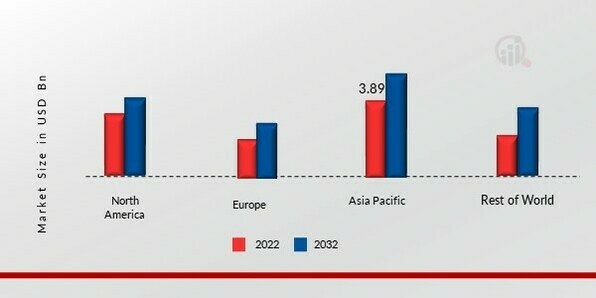





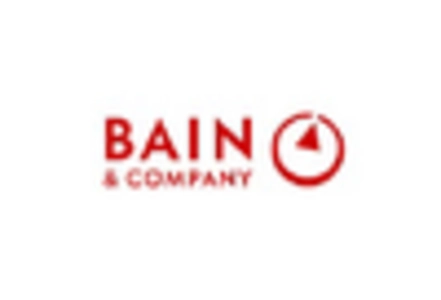
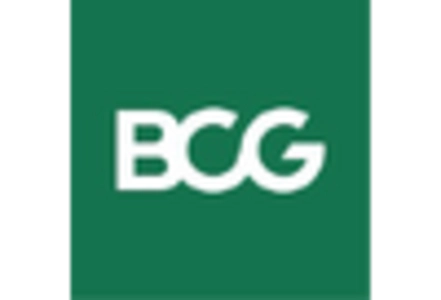
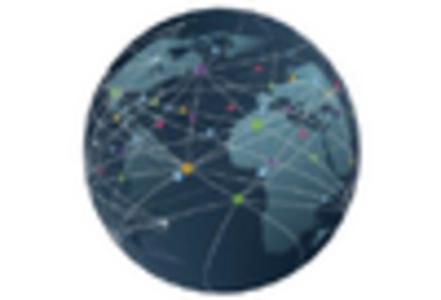
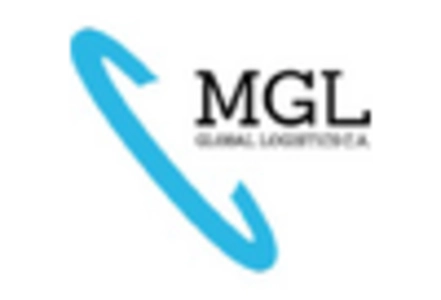

Leave a Comment